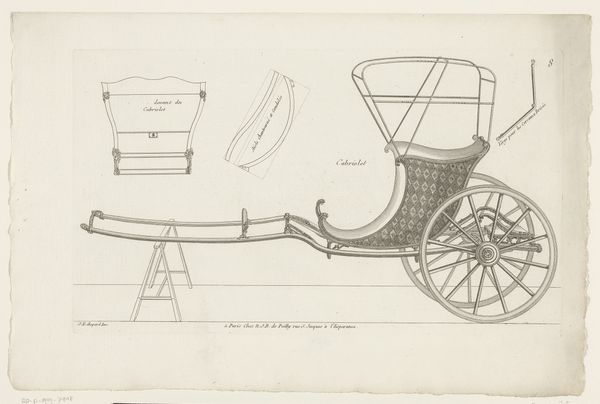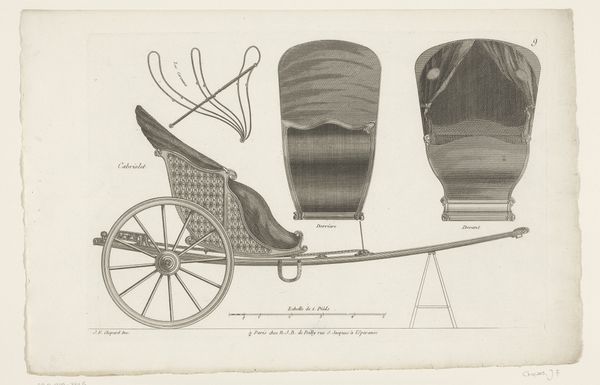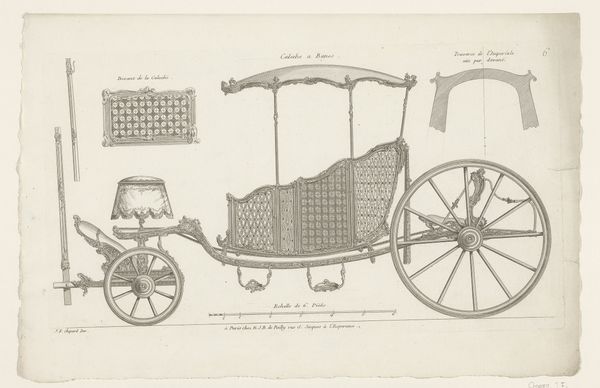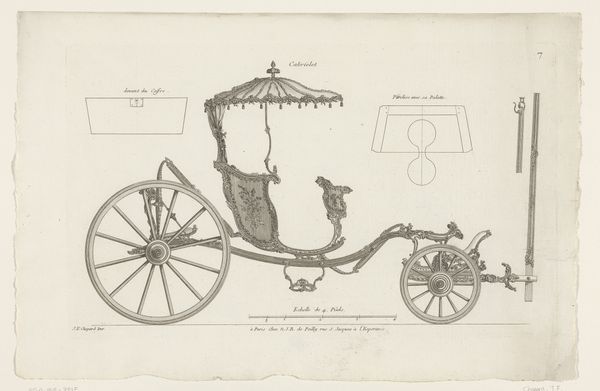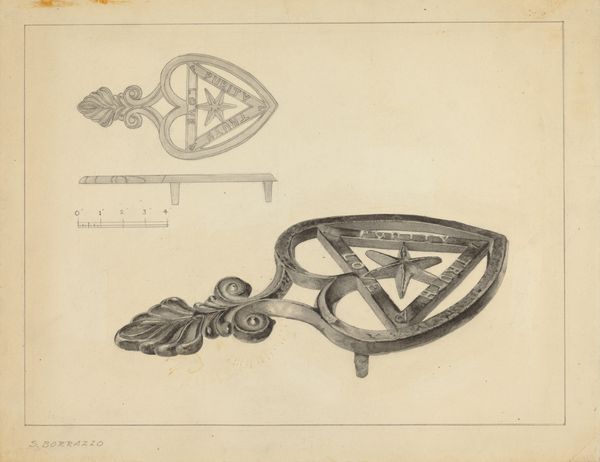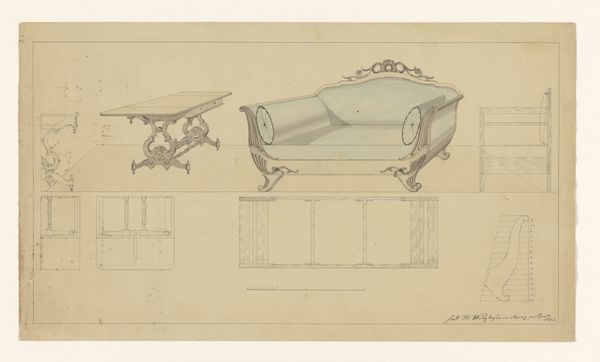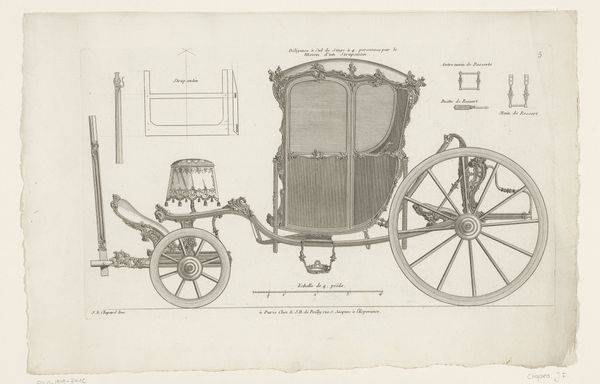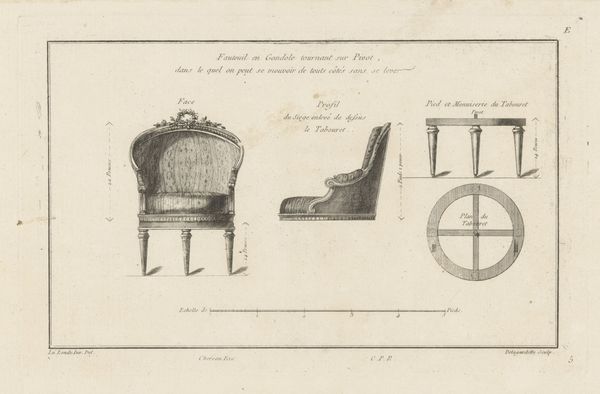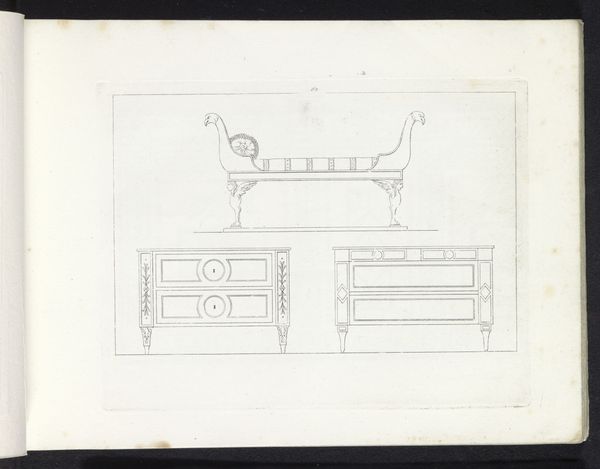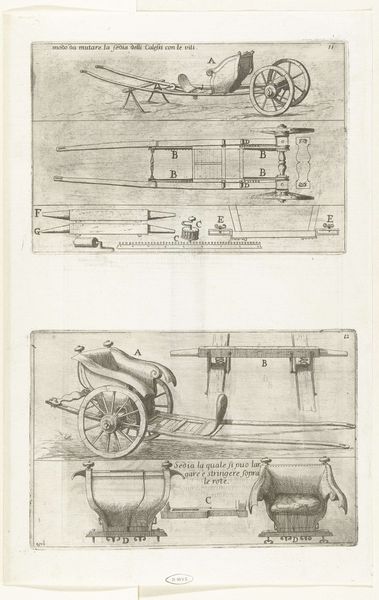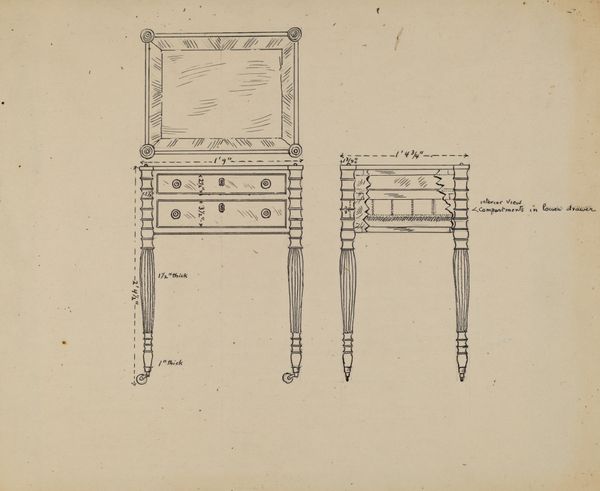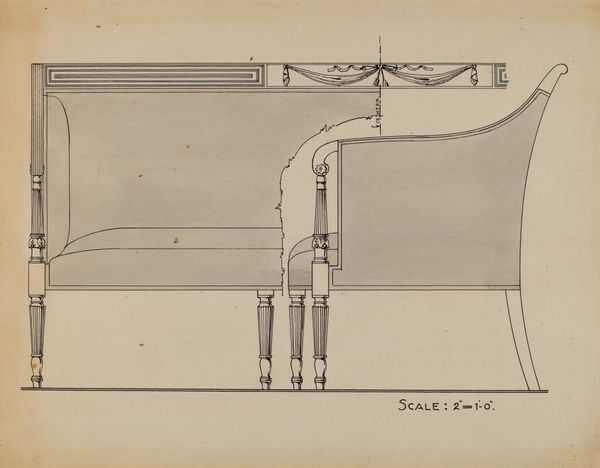
drawing, paper, engraving
#
drawing
#
paper
#
geometric
#
line
#
academic-art
#
engraving
Dimensions: height 238 mm, width 402 mm
Copyright: Rijks Museum: Open Domain
Editor: Here we have an engraving entitled "Cabriolet," made on paper sometime between 1740 and 1758, and credited to an anonymous artist. It looks like a technical drawing, very precise and detailed. What can you tell me about it? Curator: This piece offers us insight into the 18th-century mode of transportation, but beyond that, it reveals the material conditions and labor involved in its production and consumption. Consider the engraving process itself: the skilled labor of the engraver, the cost of the paper, the ink… all reflect a certain level of societal wealth and technological development. Editor: So, the act of creating the drawing mirrors the economic status of the carriage itself? Curator: Precisely! It speaks to the luxury of leisure and status, as cabriolets were expensive vehicles. Look at the fine lines, the precision of the details—they showcase not only the craftsmanship of the carriage makers, but also that of the printmaker employed to create this image. Consider the social context; Who was this image for? Why document the production in such detailed drawings? Editor: It makes you wonder who had access to owning, or even viewing, such an item. Curator: Indeed. The production and consumption of both the carriage and this engraving point to the complex relationships between art, industry, and social class in the 18th century. Think of the resources that would go into building this carriage... What's your takeaway now? Editor: Now I'm seeing the drawing as a window into the economics of the era, linking materials and labor to the wealthy patrons. Thanks! Curator: Exactly. It's a shift from simply admiring the "art" to understanding the material realities behind it.
Comments
No comments
Be the first to comment and join the conversation on the ultimate creative platform.
